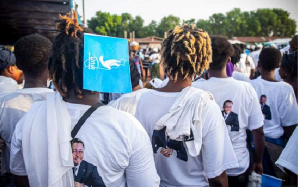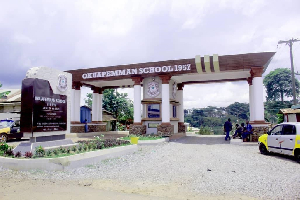Business News of Monday, 1 February 2021
Source: www.ghanaweb.com
Upper East Region hit by a hike in watermelon prices
 Watermelons are predominantly grown in areas like Kulungungu, Binduri, Pwalugu, Bawku, and Langbinsi
Watermelons are predominantly grown in areas like Kulungungu, Binduri, Pwalugu, Bawku, and Langbinsi
Correspondence from Upper East:
The Upper East Region has been hit by an unusual hike in the prices of watermelons.
Watermelons are predominantly grown in areas like Kulungungu, Binduri, Pwalugu, Bawku, and Langbinsi.
The fruit which is annually cultivated in these areas in a bumper harvest witnessed a rather poor harvest this year.
Two kinds of watermelons are sold in the Upper East Region. The Burkina Faso grown watermelons, and the locally grown ones.
The locally grown watermelons have purely green skin, while the Burkina Faso grown ones have green skin with dark green stripes. They have a more reddish flesh and a sweeter taste than the local ones.
Demand for the locally grown ones is higher because they are relatively cheaper.
Ghanaweb's Upper East Regional Correspondent, Sarah Dubure, engaged with a farmer in Pwalugu, Mr. Abraham Adakablah, and he attributed the development to a mass infestation of watermelon farms by an insect called, the whitefly.
He noted that it wasn't the first time the farms were infested by the whiteflies.
Mr Adakablah explained that in previous seasons, they saw the insects on their farms for a duration of about two weeks, but this year, they terrorised their farms for more than two months.
He added that they did not get a recommended pesticide for the whiteflies, hence the devastating effect.
The farmer further said that most of his colleagues decided to venture into the cultivation of other crops because there was no ready market for watermelons.
They, therefore, thought it wise to venture into crops that are economically vibrant.
A fruit seller, Madam Akua Asamolga, lamented over low patronage. She said she bought a basin of the locally grown watermelon at GHC300 last year, but bought the same quantity at GHC500 this year.
Madam Akua said she sold a small-sized watermelon at GHC2 last year, but had to sell the same size for GHC5 this year.
Adding that she sold a big sized one for GHC10 last year, and had to sell one of the same sizes at GHC15 to GHC20.
She described the situation as disturbing because anytime people ask of the prices of the watermelons, those who bought them outnumbered those who walked away.
"If they are coming to buy, they will ask, and more(customers) will go but small will buy. So it let the market just come down ", she said.
With regard to Burkina Faso grown watermelons, Madam Akua complained the case was not any different because she bought a basin of them at a cost of GHC800.
She said a medium-sized one went for GHC20, which made the situation worse.
" The wagaa (Burkina Faso) own like this, the market is not good because they are too expensive. If they come and you give the price, they will go", she said.
Traders are hopeful of an increase in sales to prevent the rotting away of the fruits; which will subsequently lead to them (traders) running at loss.










